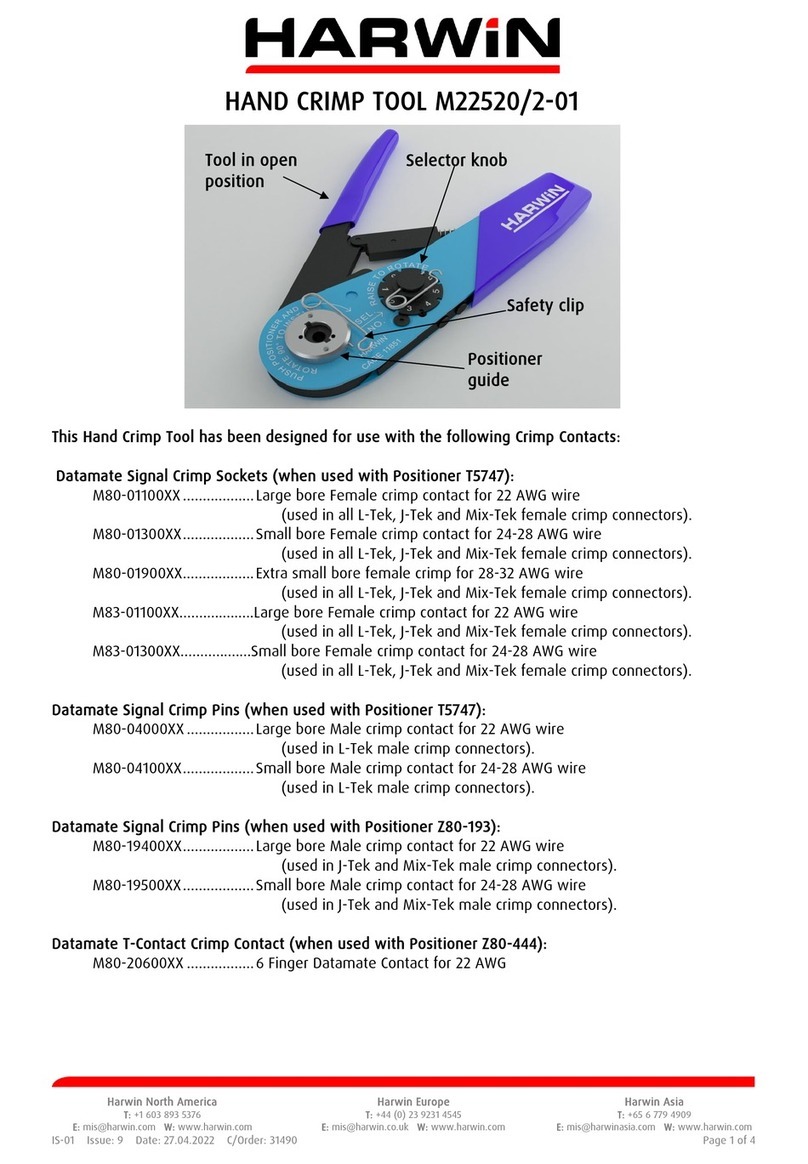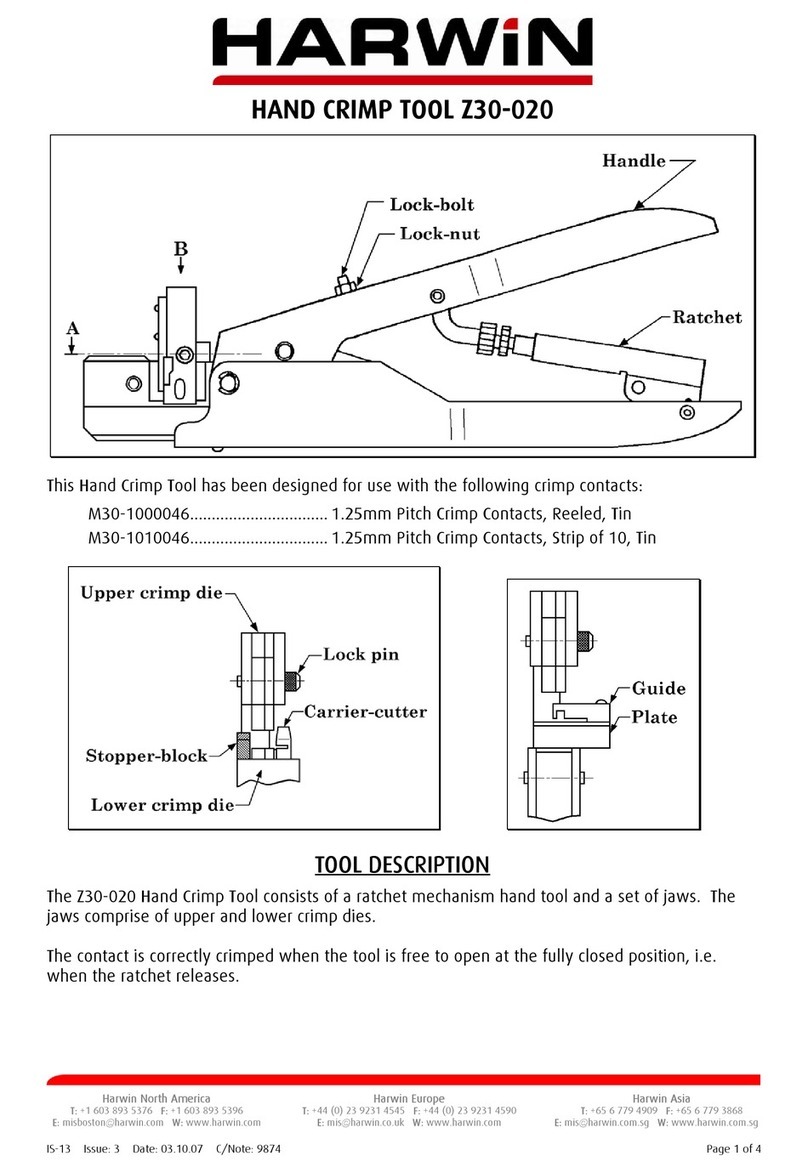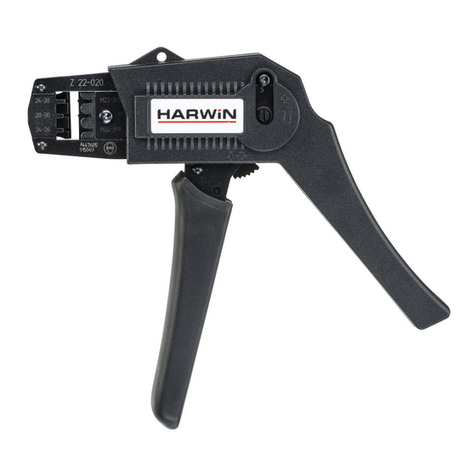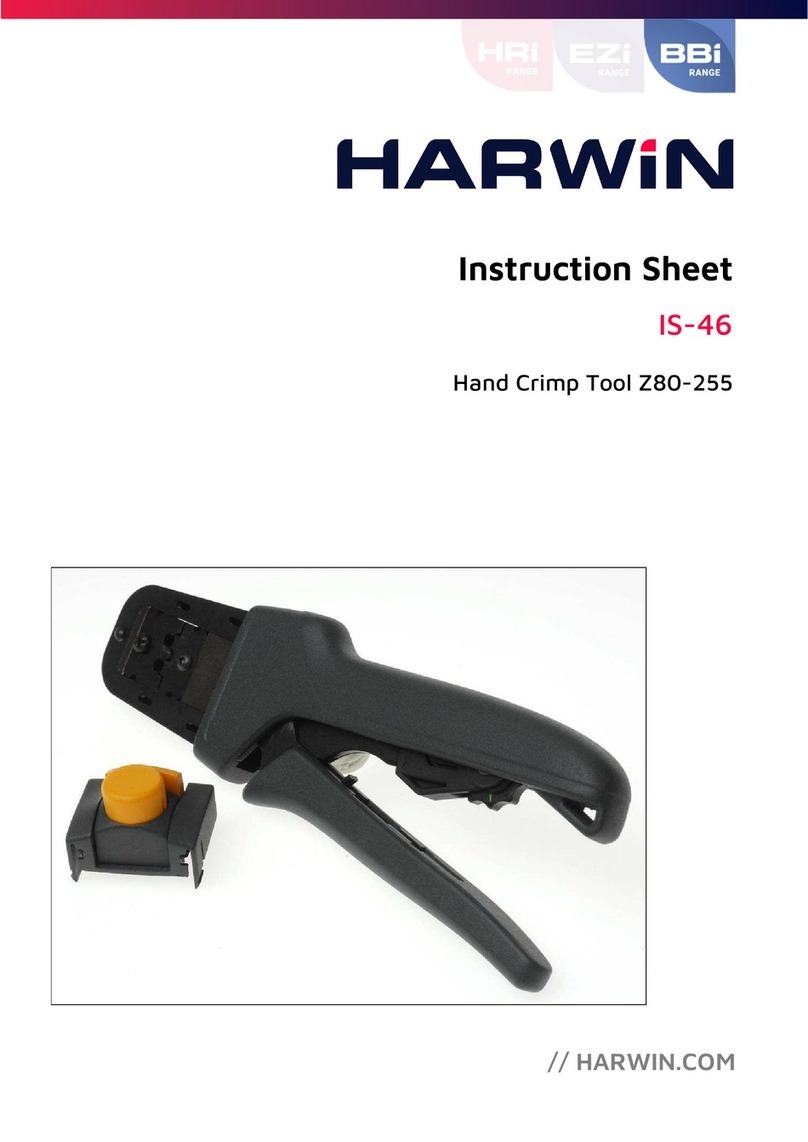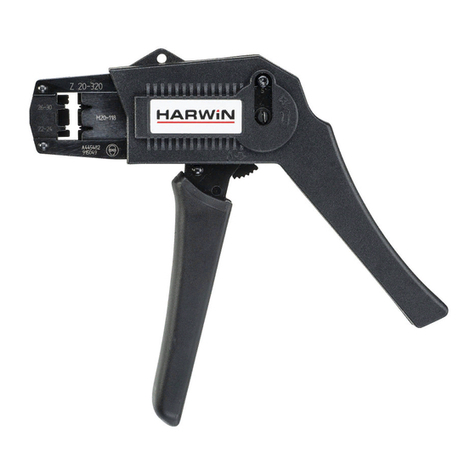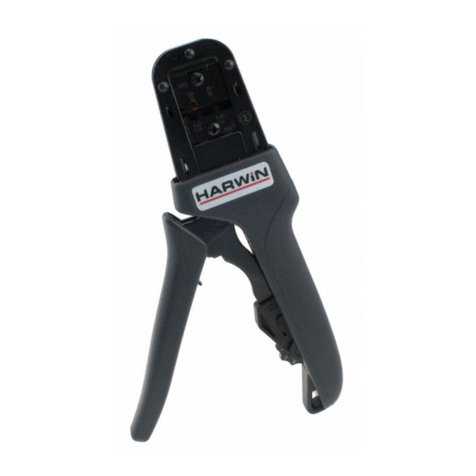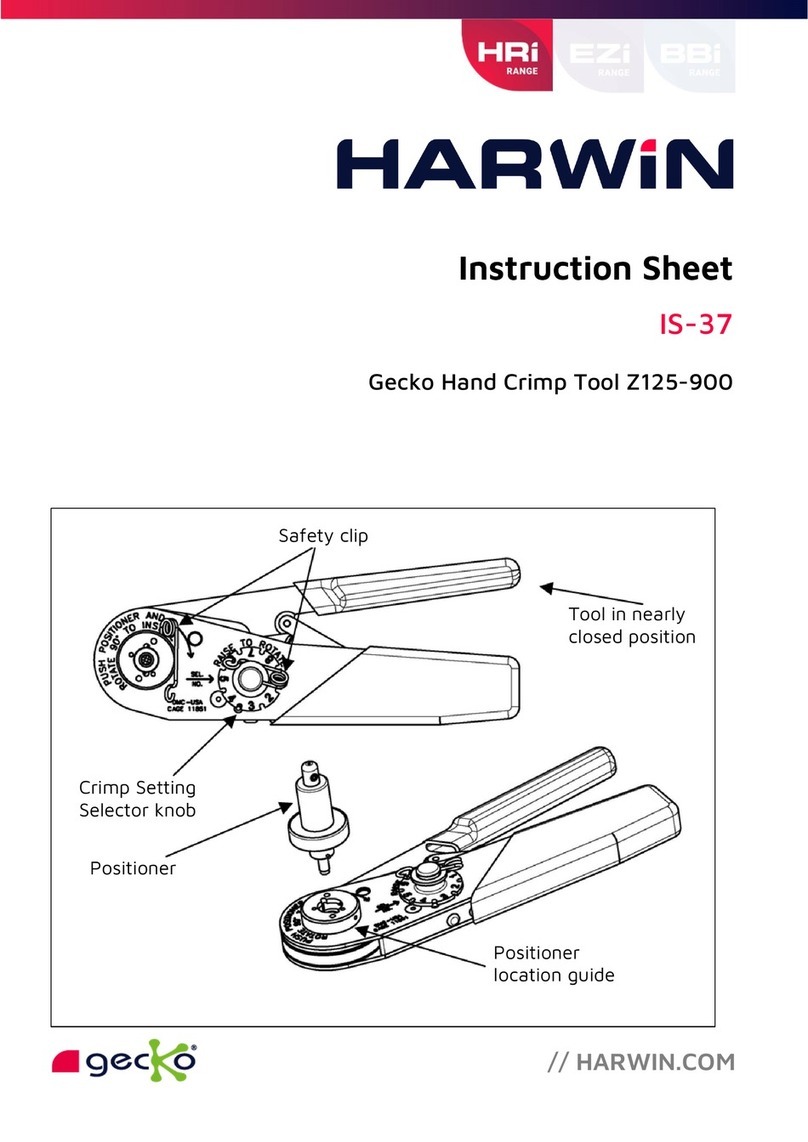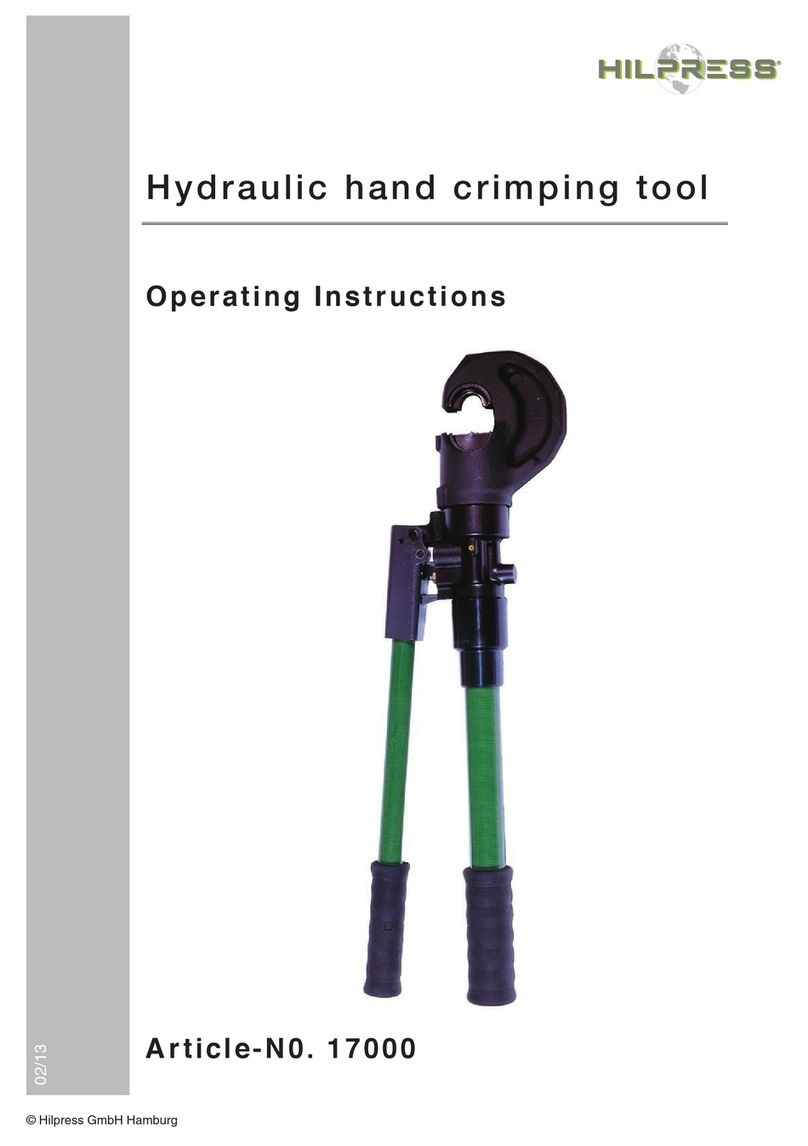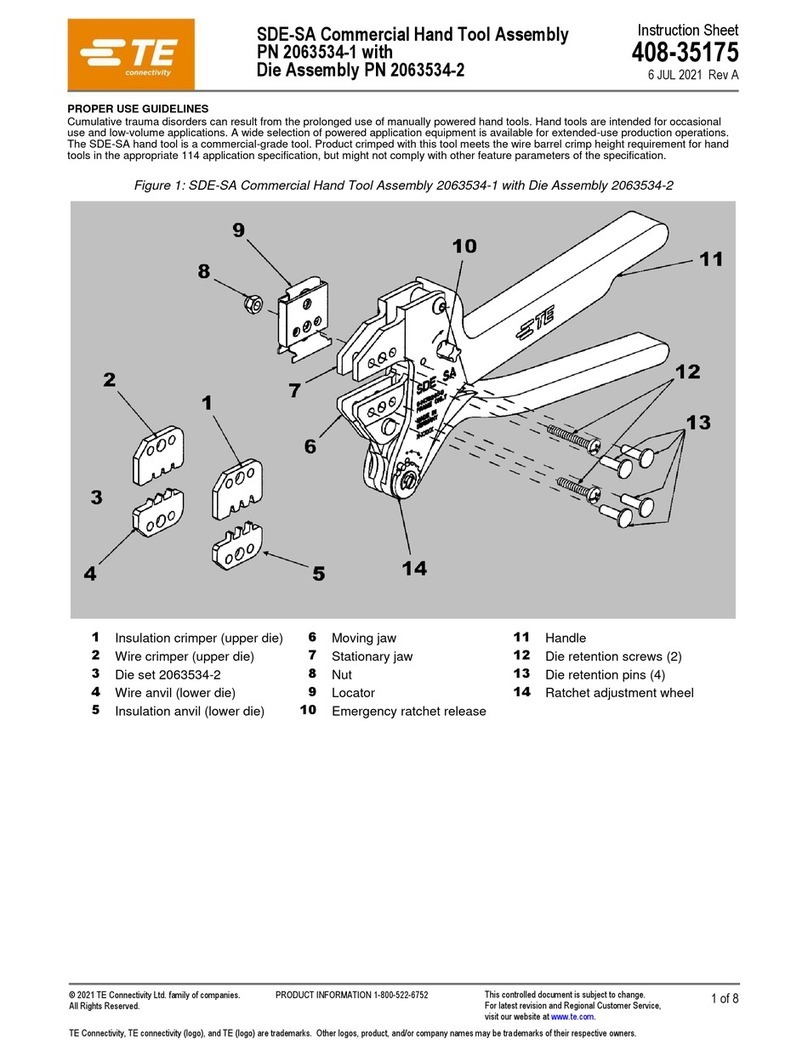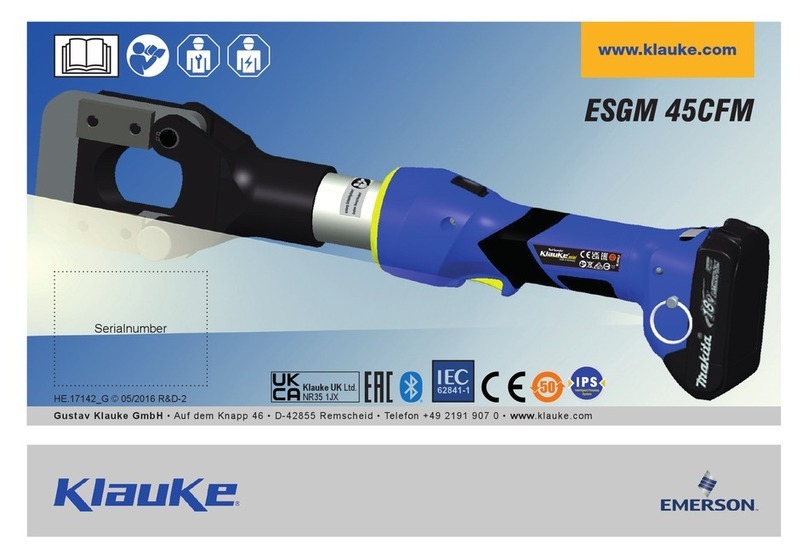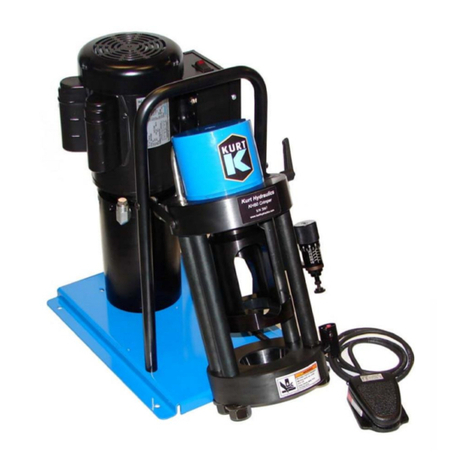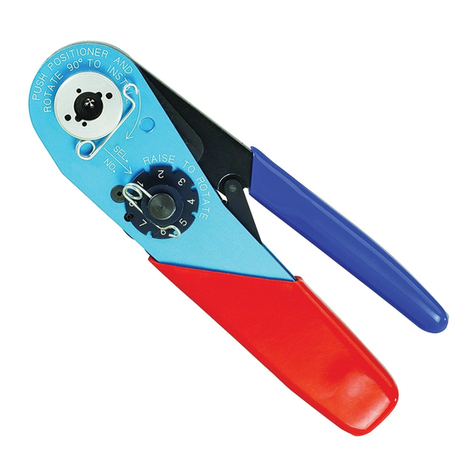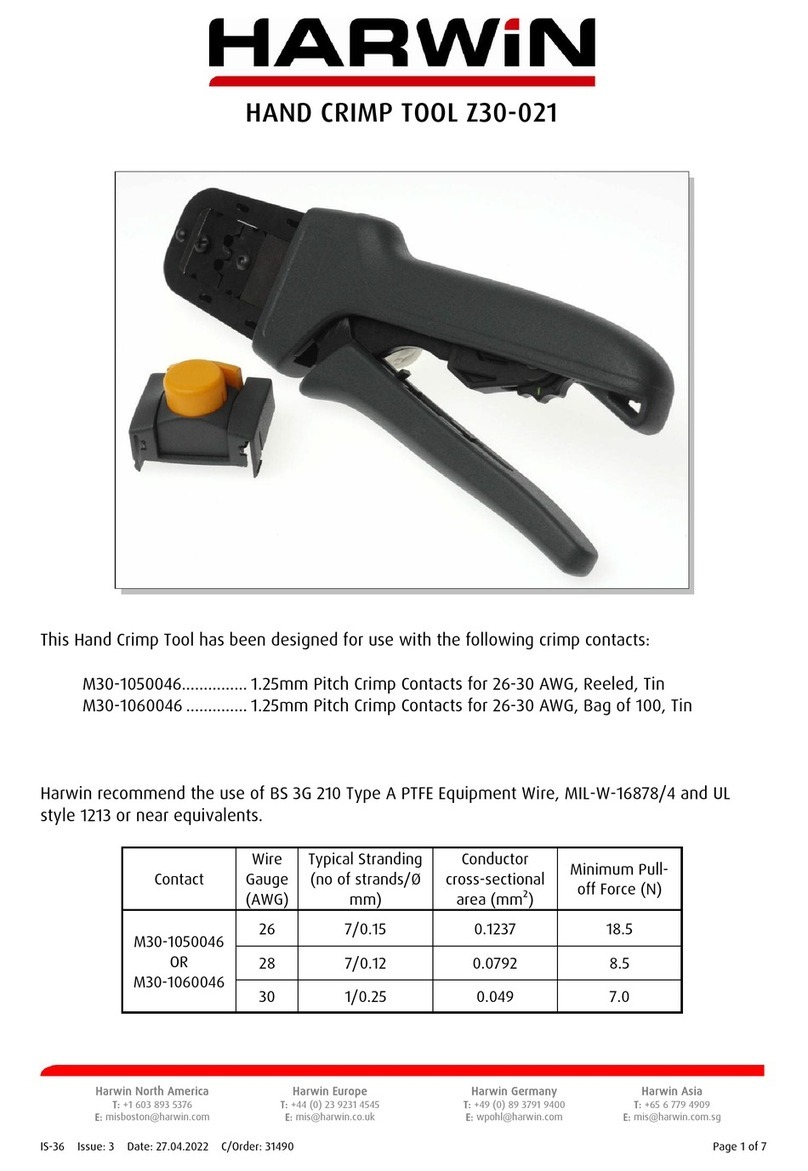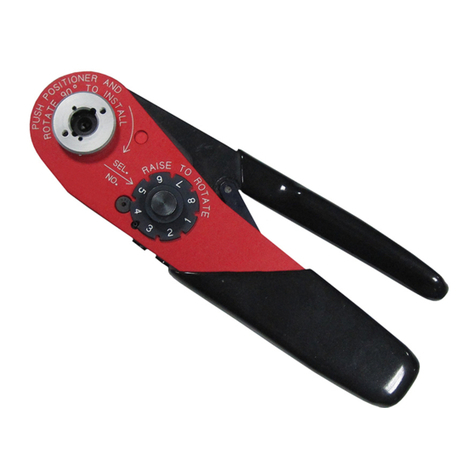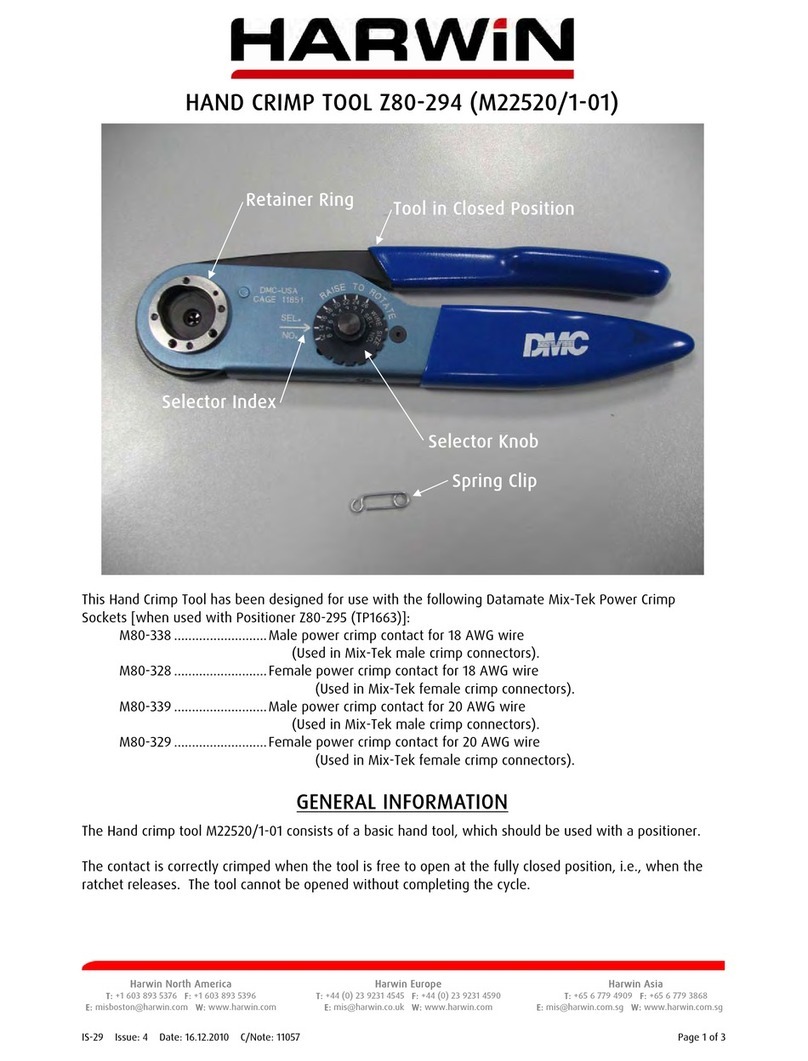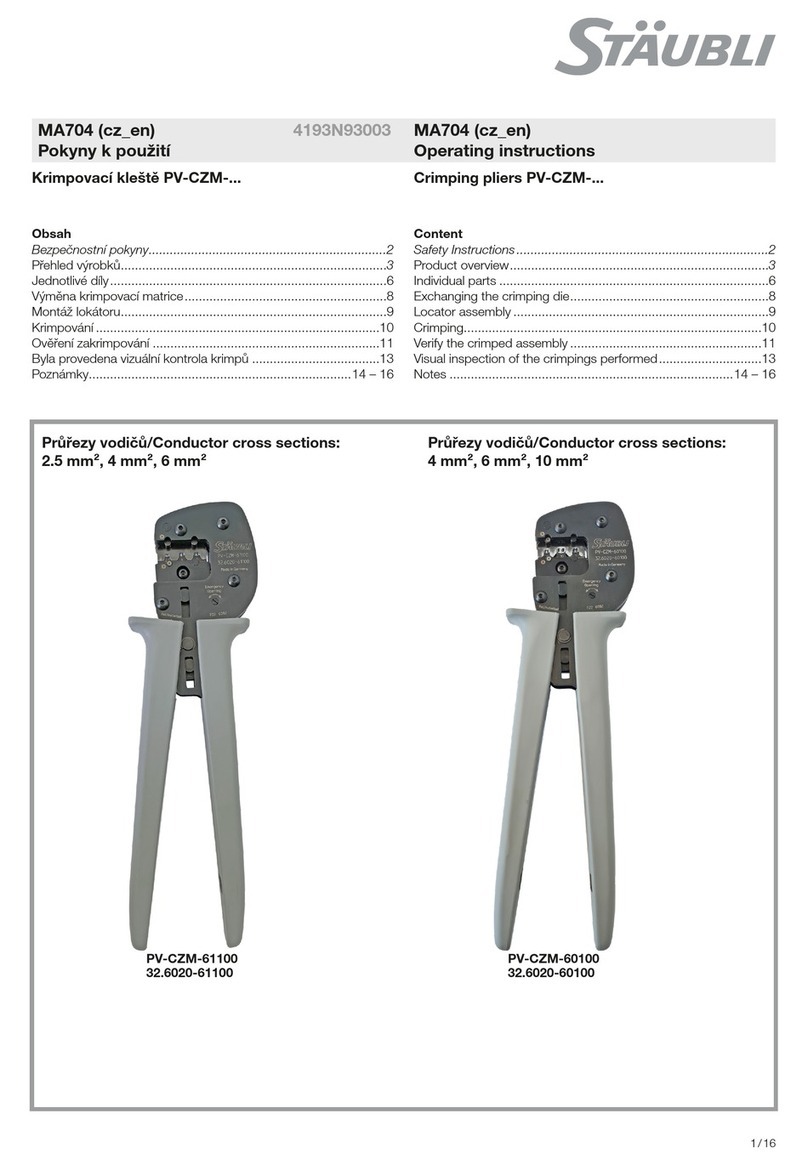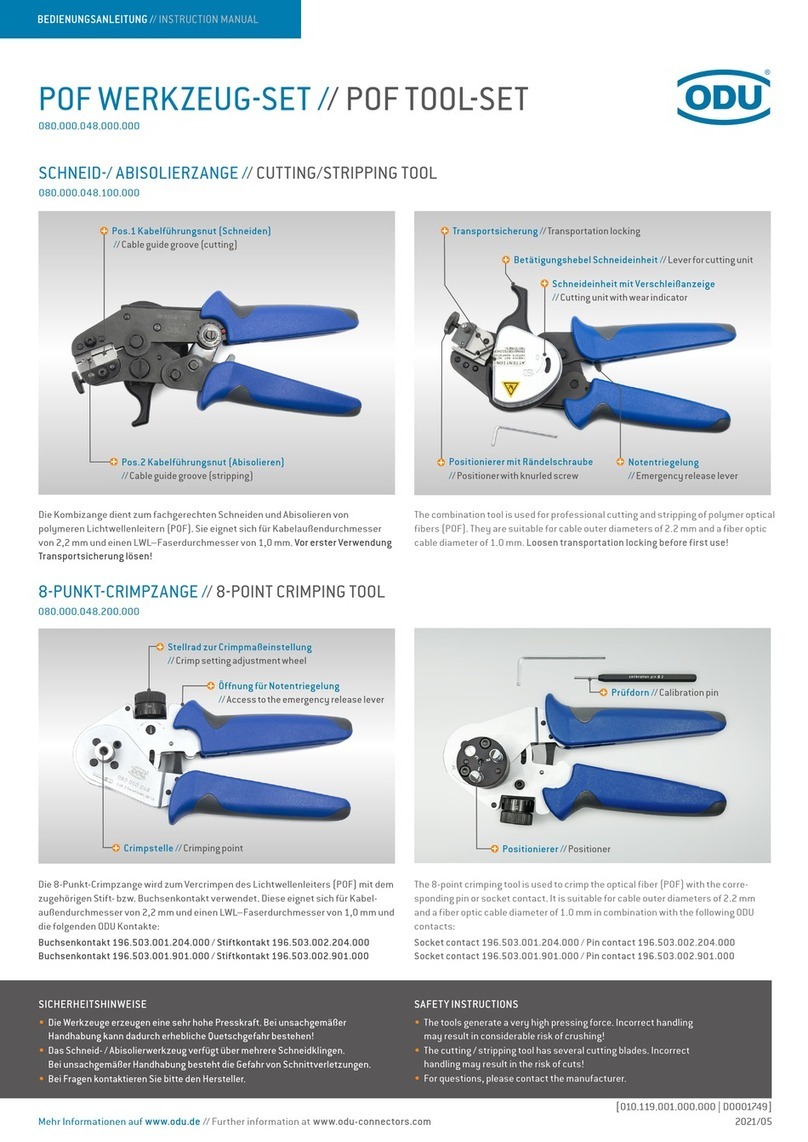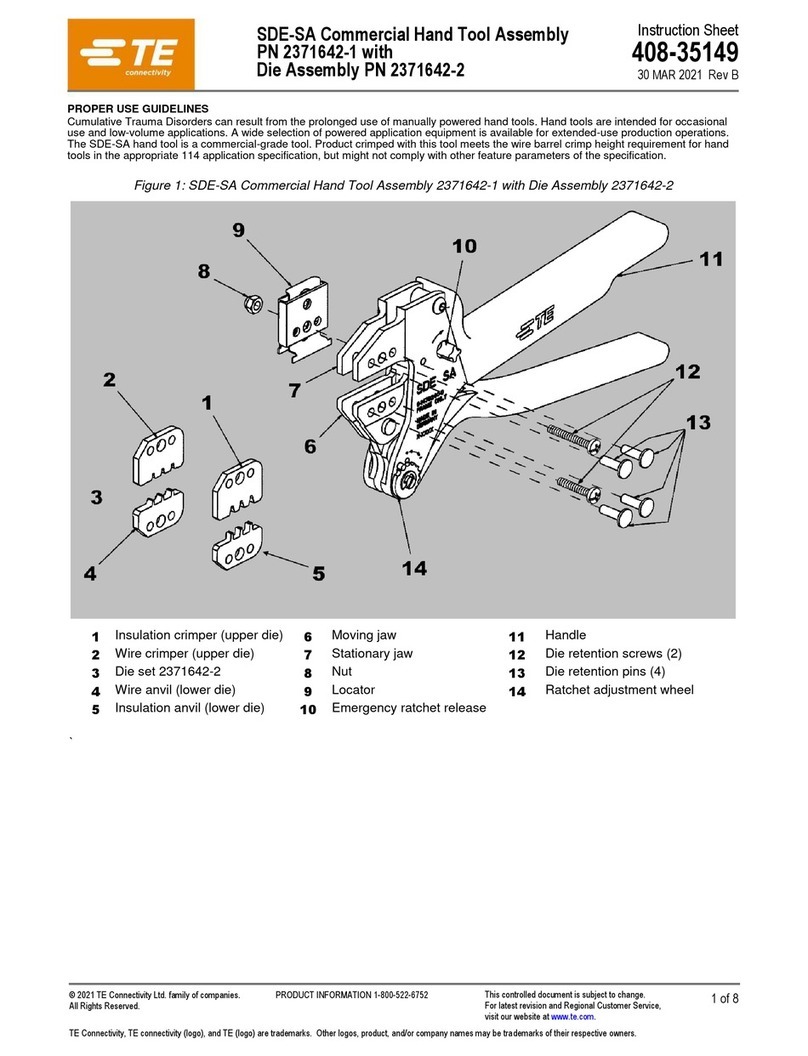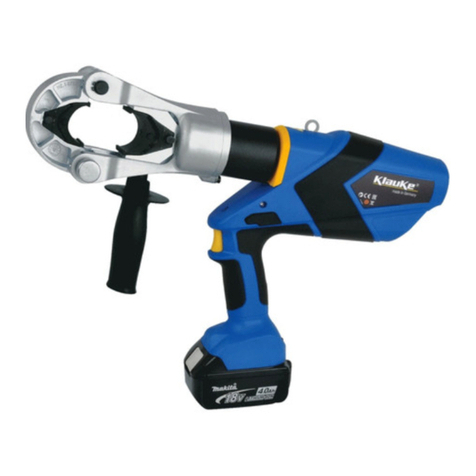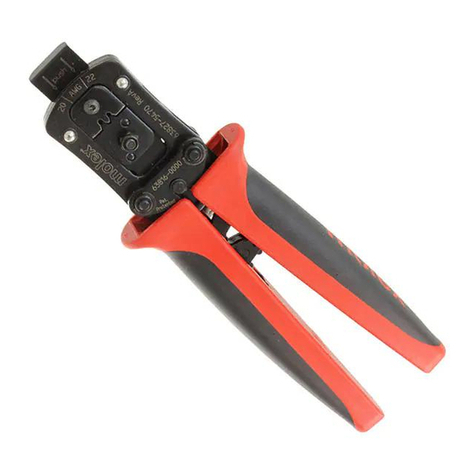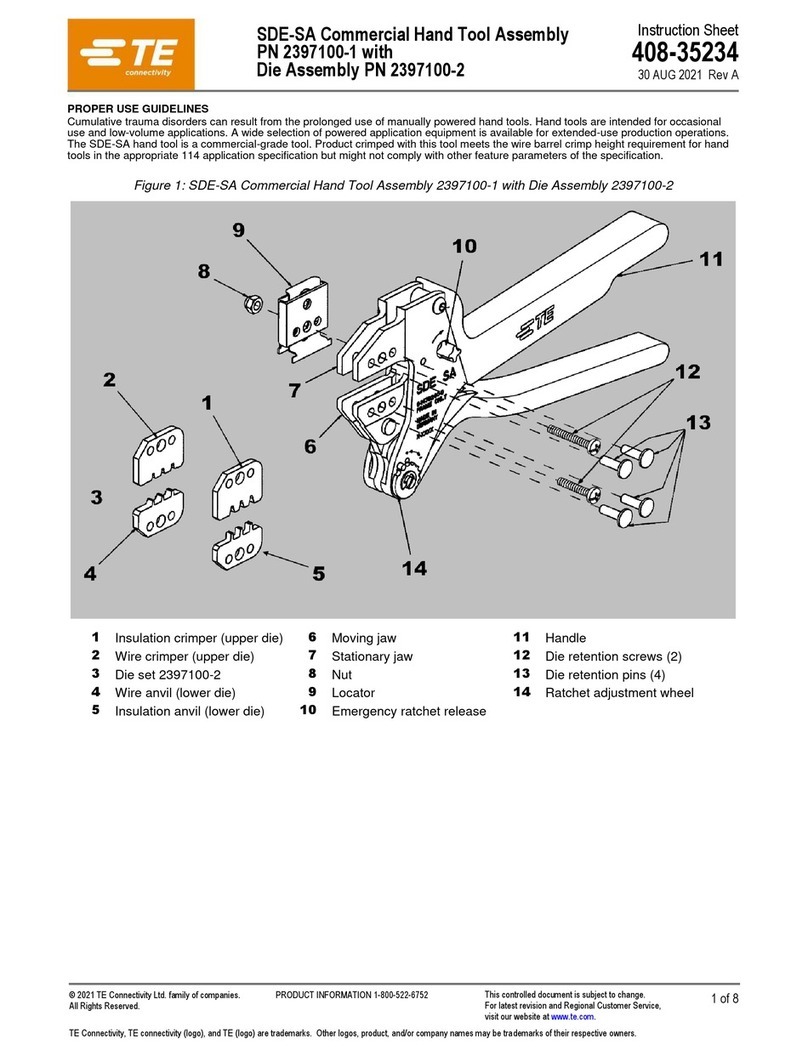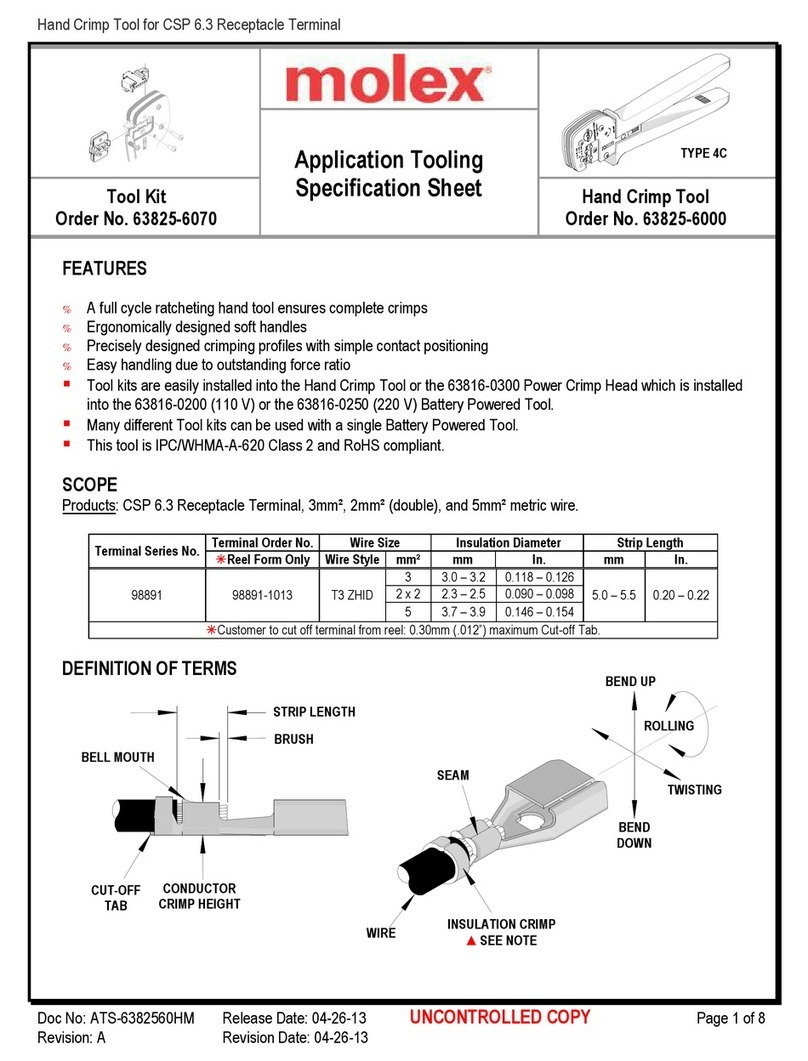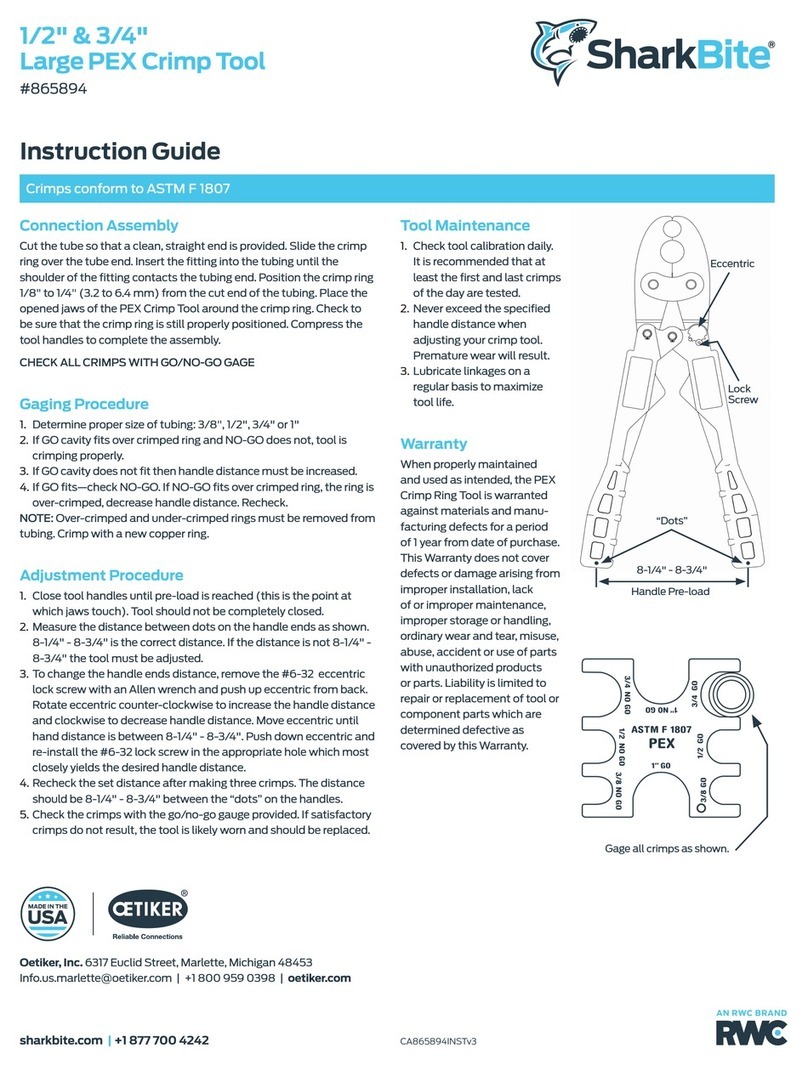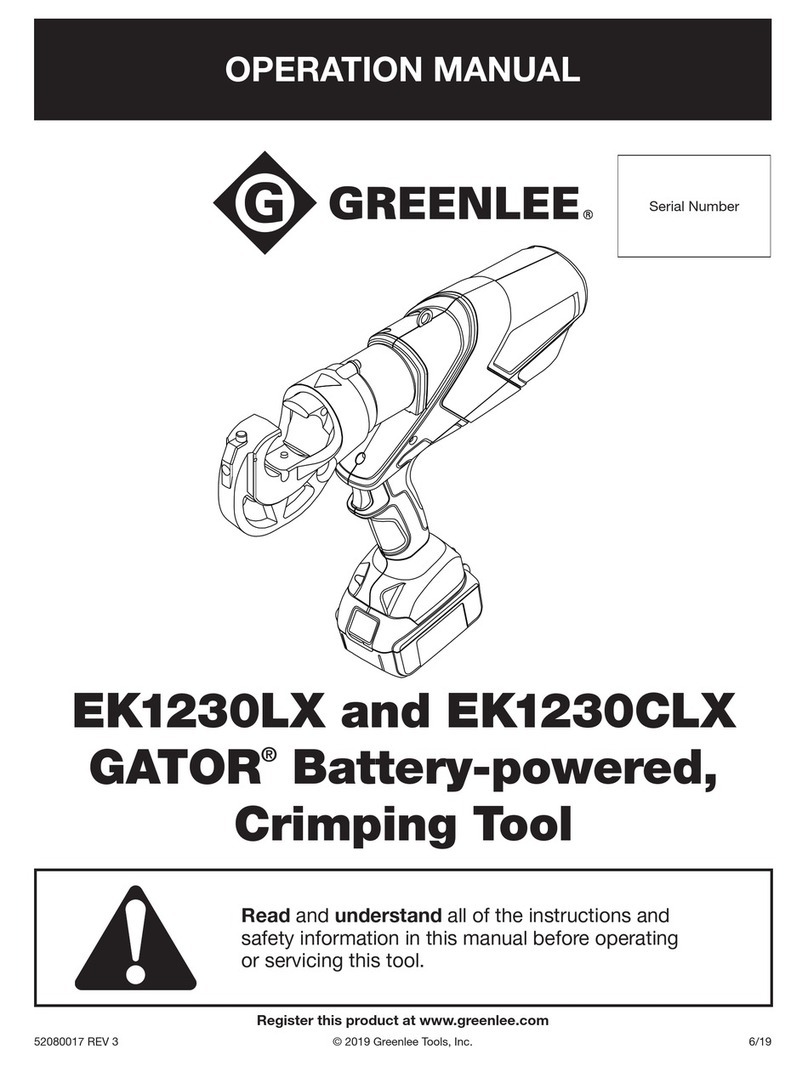
Harwin North America Harwin Europe Harwin Asia
T: +1 603 893 5376 T: +44 (0) 23 9231 4545 T: +65 6 779 4909
IS-34 Issue: 6Date: 26.04.2022 C/Order: 31490 Page 4 of 4
CRIMPING PROCEDURE Z80-293
1. Ensure that the wire to be crimped is within the specified range of sizes for the contact
and the crimp tool (see table 1). Failure to use the specified wire size will result in poor
quality crimps and possible tool damage.
2. See Figs. A & B for correct wire stripping dimensions for the appropriate contact. The
straight coax contact (Fig A) will need to be crimped to the wire before insertion into
outer contact. For the 90° coax contact (Fig B) the wire is inserted into the coax body and
soldered before assembly, see component specification C005XX for further details of coax
assembly methods. We recommend that when the wire is stripped, it is clamped or
supported close to the stripping area - this will prevent insulation slippage. Suitable wire
strippers (such as a PTFE wire stripper) must be used.
3. Check below table 3 to select which of the two hexagon sizes is correct to crimp contact
with. Place contact with crimp sleeve in position into the above selected hexagon with the
flat against the surface (the side with the manufacturers ID plate on), gently squeeze the
handle until it will go no further the crimp is now complete, squeeze handle again to
release completed crimp.
4. A correctly crimped contact & sleeve will achieve a pull off force of 30N minimum.
Table 3
Cable
Type
Max.
Insulation
Compatible Contacts Crimp Sleeve
Hexagon Size
RG 178 Ø2.0mm
M80-305, M80-308,
M80-315, M80-318
Small
0.105” (2.67mm) A/F
RG 174 Ø2.7mm
M80-307, M80-309,
M80-317, M80-319
Large
0.128” (3.25mm) A/F
RG 179 Ø2.7mm
M80-307, M80-309,
M80-317, M80-319
Large
0.128” (3.25mm) A/F
RG 316 Ø2.7mm M80-307, M80-309,
Large
CARE OF TOOL
There is virtually no maintenance required for the Z80-292 & Z80-293. However, it is good
practice to keep the indenter tips free of residual colour band deposits and other debris. A small
wire brush may be used for this purpose.
We strongly recommend that you:
1. DO NOT immerse tools in any cleaning solution.
2. DO NOT spray oil into tool to lubricate.
3. DO NOT attempt to disassemble tool or make repairs
This is a precision crimp tool and should be handled as such.

